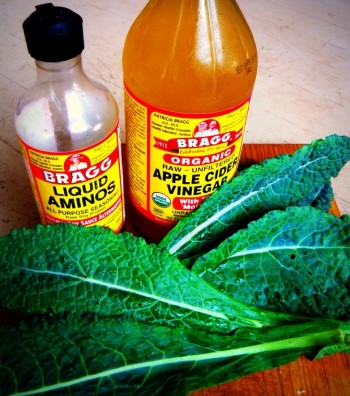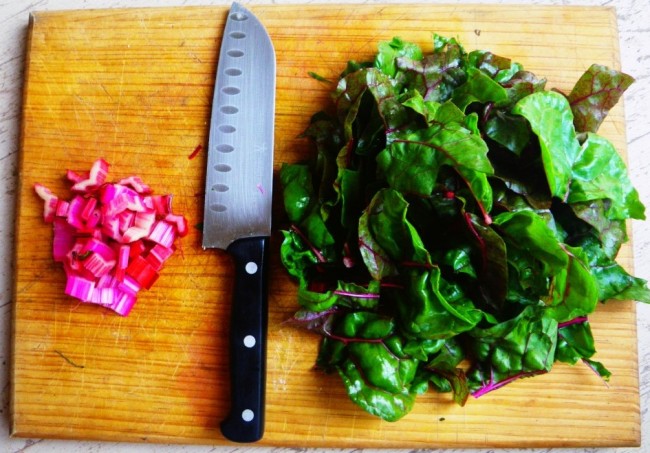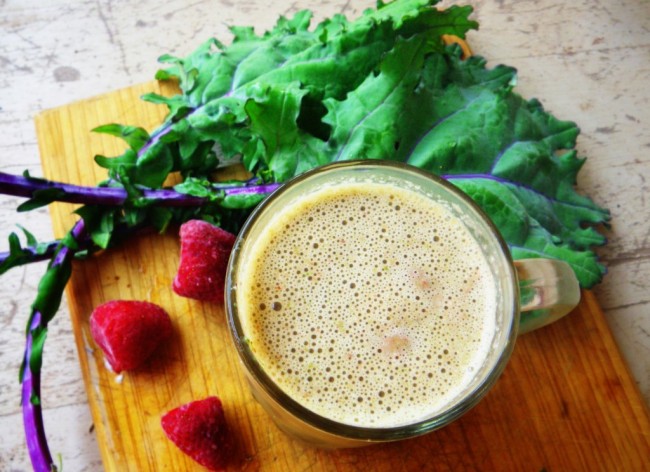28 Jun Cooking Greens 101
We are into week seven of CSA pick-ups and by now you’ve probably realized cooking greens (namely, kale and swiss chard) are a part of nearly every share. If you are a new member, you might be wondering what the heck to do with it all. Hopefully you’ve come up with a few favorite ways to prepare them by now. If not, here are a few tips and ideas even the most seasoned veterans might be able to use:
- The stems of both kale and chard are perfectly edible. They require more cooking time than the leafy parts, but when included in cooked greens, they provide a nice crunch to contrast the wilted leaves. To include them, just strip the leaves from the stems, chop the stems, and add them to the pan 3-5 minutes before the chopped greens (see recipe below).
- Chard is a great substitute for spinach. In its raw state, I find the flavor to be a bit stronger, but when cooked, if behaves very similarly. Like spinach, it is high in iron and other valuable vitamins and minerals. When replacing spinach with chard in a recipe, use only the leaves (no stems) for a similar texture.
- Kale is a super food. It has more nutrients per calorie than any other commercially grown vegetable. It has more protein than beef, more calcium than milk, and a good dose of immune boosting vitamins like A and C. And even though it is a “cooking green” it is delightful raw if you know how to prepare it—I love it as a salad and a nutritious addition to my morning smoothie (recipes below).
Sautéed Chard or Kale with Garlic
Remove stems from leaves of ¾ pound swiss chard or kale by holding on to the stem and stripping the leaf off with your hand from bottom to top (or cutting down the side of each stem). Chop stems like you would celery. Roll leaves up into a loose tube and cut into thick strips. Set aside.
Heat a large skillet with enough oil (I like organic sunflower seed and coconut oil for their stability at high heat) to coat the bottom of the pan. Add 4 cloves of thinly sliced garlic and the kale or chard stems and cook on medium heat until garlic begins to brown and stems soften a bit. Add leaves of kale or chard in batches, adding as many greens to the skillet as will fit, stirring as it wilts. When all the leaves are just wilted, sprinkle in a bit of balsamic or red wine vinegar and salt to taste. Remove from heat. Serve as a side dish or topping for whole grain pasta, rice, or quinoa.
Variation (particularly good with kale): Add 1 tablespoon minced ginger along with the garlic. Replace vinegar with a sprinkle of soy sauce.
Super Food Smoothie
In a blender, combine 1 cup frozen berries (the frozen part is key for a milk-shake like consistency since I don’t add any extra ice), ½ cup plain yogurt, ½ -1 cup orange juice, 1 ripe banana, 2 tablespoons unsweetened shredded coconut, and 3-4 leaves of kale, stems removed. Puree until liquefied, adding more juice if needed.
The Raw Kale Salad
This is the salad I make for kale newbies. It will make a kale convert out of anyone. It is simple, delicious, and infinitely adaptable. The key to eating raw kale is to dress it at least 15 minutes (and up to a few hours) before you actually want to eat it. I like using Tuscan kale for this one, but any kale variety will work.
 Remove stems from ¾ pound Tuscan kale. Stack leaves on top of one another and cut into thin strips (julienne, if you will).
Remove stems from ¾ pound Tuscan kale. Stack leaves on top of one another and cut into thin strips (julienne, if you will).
In a small bowl, whisk together 3 tablespoons extra virgin olive oil, 3 tablespoons raw apple cider vinegar, 1 tablespoon Bragg’s Liquid Aminos (you can use tamari or soy sauce as a substitute, but I highly recommend investing in a bottle of this stuff), and ¼ cup nutritional yeast (also known as brewer’s yeast, available in a health food store near you).
In a large bowl, toss kale with dressing, “massaging” the leaves, encouraging some of the toughness to break down. Add whatever toppings your heart desires. My favorites include: chopped apples or pears, raisins or dried cranberries, goat cheese, and walnuts or almonds. Let sit for at least 15 minutes before devouring.
Text and photography by Kate Darlington – Blooming Glen Farm second year intern, fresh food enthusiast, and budding food blogger. She also writes for the Digging Deep Campaign as well as for her personal blog, Growing Things.







Sorry, the comment form is closed at this time.